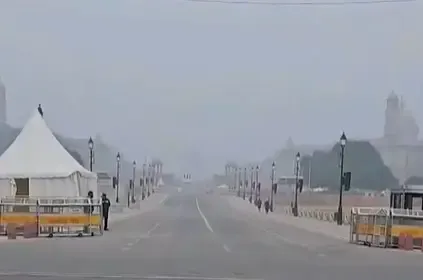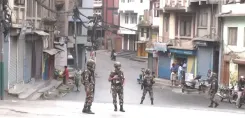Thick Fog Blankets Delhi as Temperatures Drop and Air Quality Worsens

New Delhi, Jan 3 (NationPress) On Friday, Delhi was enveloped in a thick layer of fog, with temperatures plummeting to a low of 8 degrees Celsius. Additionally, the region's air quality further declined, registering an Air Quality Index (AQI) of 318, falling under the very poor classification, as the Central Pollution Control Board resumed its data updates after a hiatus of one day.
The forecast anticipates maximum and minimum temperatures of 17 degrees Celsius and 8 degrees Celsius respectively.
Visibility deteriorated considerably at 6 am, prompting authorities to implement safety measures. Flights lacking the necessary equipment for low-visibility landings, particularly those not compliant with CAT III standards, are likely to face delays or cancellations.
The Safdarjung weather station, which serves as a reference point for Delhi's climate, recorded a maximum temperature of 16.2 degrees Celsius on Thursday, a slight increase from 15 degrees Celsius the previous day but still three degrees below the average.
Per the India Meteorological Department (IMD), “cold day” conditions are identified when the maximum temperature is 4.5 degrees Celsius or more below average, and the minimum temperature is below 10 degrees Celsius. Although Safdarjung did not meet this criterion, the weather stations in Palam, Najafgarh, Pusa, and Narela reported “cold day” conditions.
However, relief seems imminent as the IMD forecasts a slight rise in temperatures due to an incoming western disturbance. The maximum temperature in Delhi is predicted to be around 17 degrees Celsius on Friday, potentially rising to 18 degrees Celsius by Saturday. An IMD official indicated that a marginal increase of approximately one degree in maximum temperatures is expected across most areas.
On Thursday, Delhi faced dense fog, with temperatures dropping to 10 degrees Celsius at 5:30 a.m. This reduction in visibility caused possible disruptions at the Indira Gandhi International (IGI) Airport.
Runway visibility ranged from 200 to 500 meters, while general visibility sank to zero around 6 a.m. Flights equipped with low-visibility systems were able to land, but others experienced delays and diversions.







